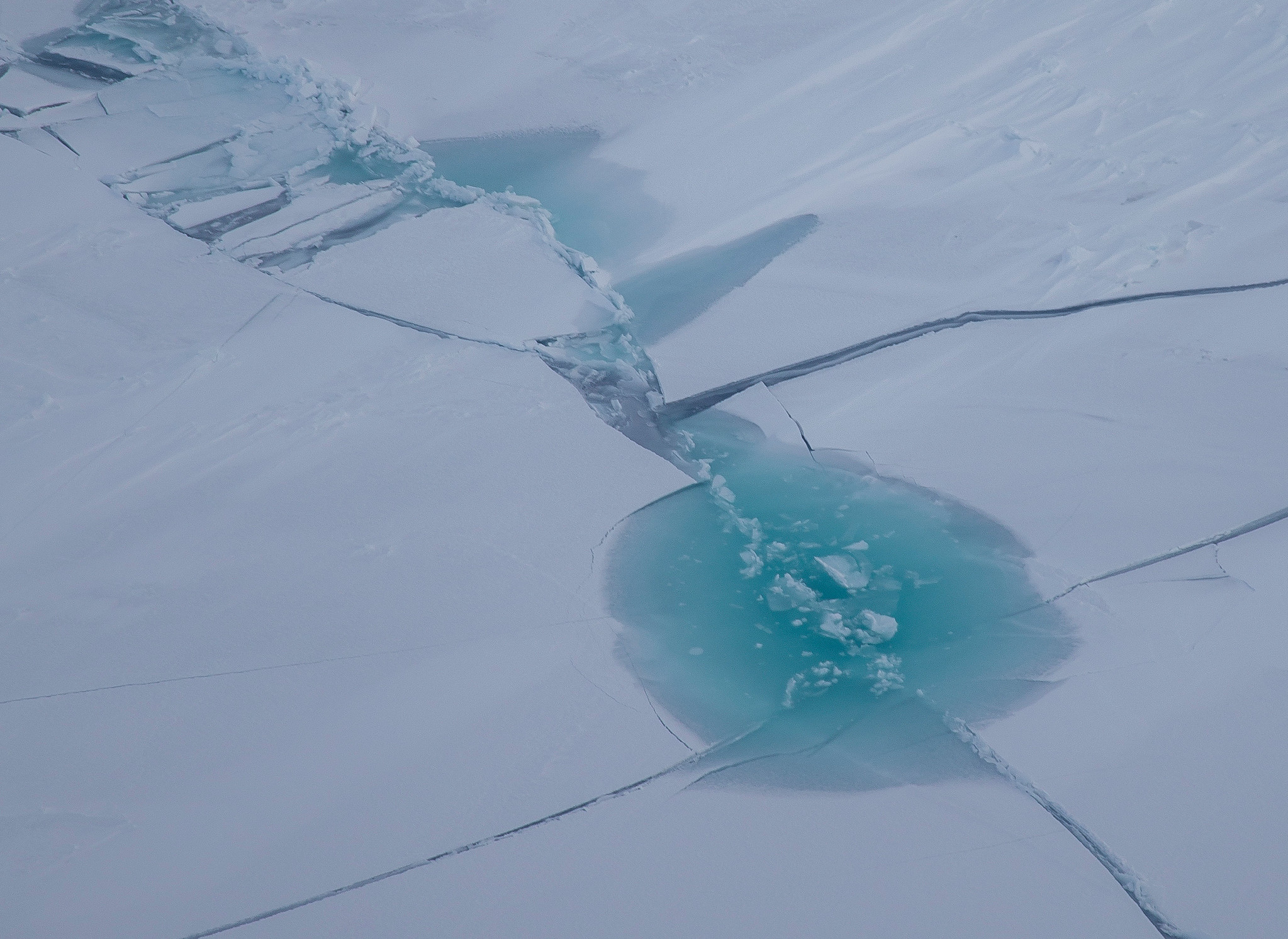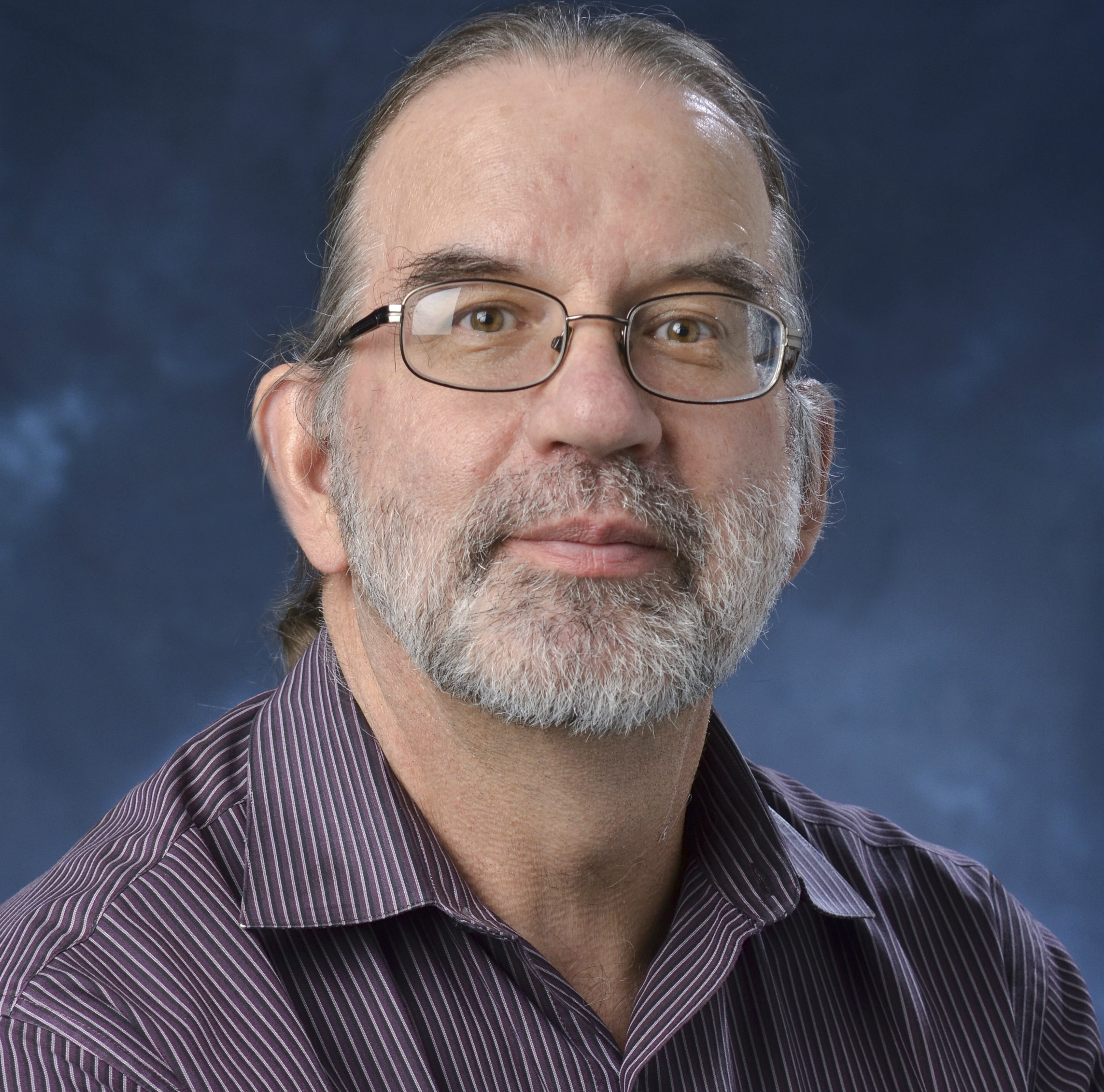An ice researcher’s memoir follows the unfolding story Arctic melting tells about climate change
During the course of Mark Serreze's career, it's become clear from sea ice research that humans are causing global climate change.

Arctic sea ice is the most tangible, measurable and visible sign of climate change in the northern part of the world.
But there was a time when the scientist now directing the National Snow and Ice Data Center, the research organization that tracks sea ice, glaciers, permafrost and the entire cryosphere, did not recognize the significance of what was happening in the Arctic.
In his newly published book, “Brave New Arctic,” NSIDC Director Mark Serreze describes his journey as a climate scientist and ice expert — and his journey toward certainty that manmade emissions are warming the Arctic and erasing its sea ice.
One need look no further, he said, than the current composition of the Arctic sea ice pack.
In the 1980s, according to NSIDC records, about two-thirds of the ice covering the Arctic in late winter — as measured in at the ninth week of the year — was more than a year old, freeze that had survived at least one melt season.
At the nine-week mark of 2018, only 34 percent of the Arctic pack was multiyear ice. Only 2 percent was ice was over five years old — compared to the 1980s level of about 30 percent. Old ice is can be 4 meters thick, making it more durable;first-year ice is half as thick or even thinner, and thus less likely to last as long.
“There’s not much multiyear ice left in the Arctic Ocean, especially the really old ice,” Serreze said. The only really old ice that’s left, he noted, is a bit that is trapped and “crunched up” along the islands of the Canadian Arctic Archipelago, a region that is predicted to be the last refuge of year-round sea ice and the animals that depend on it.
The latest information signals the approach of an ice-free summer Arctic Ocean, Serreze said. “When the Arctic loses all of its multiyear ice, by definition, it is a seasonal ice situation,” he said. “It is coming soon.”
Many scientists are predicting that will happen in the 2040s, but he believes it will happen a decade earlier, he said.
As told in his book, which is part memoir and part science explainer, Serreze was not always so worried about the fate of the Arctic.

He got his start in the ice business almost accidentally. He was studying astronomy and physics at the University of Massachusetts Amherst but, for various reasons, veered into a major in physical geography. In an interview, he conceded that a “hippie-dippy girlfriend” played a role. That led to a job as a field assistant to UMass’s Raymond Bradley, who was reconstructing the glacial history of part of the Canadian Arctic Archipelago. And that led to field work on Ellesmere Island, where — despite flight delays, a case of frostnip on his nose and other inconveniences — he got to know two small ice caps that provided important data for his master’s thesis. Since then, those ice caps have almost entirely disappeared, but in those days, said Serreze, “the Arctic still looked like the Arctic of old.”
He entered the University of Colorado’s Ph.D. program a few years later, and he stayed in there. He became director of the CU-hosted NSIDC in 2009.
For those who doubt the effects of manmade climate change, Serreze has some empathy. He was “kind of a skeptic” himself, even up to the year 2000, a decade after the Intergovernmental Panel on Climate Change issued its landmark first assessment about how “emissions resulting from human activities are substantially increasing the atmospheric concentrations of the greenhouse gases carbon dioxide, methane, chlorofluorocarbons (CFCs) and nitrous oxide.”
A study he co-authored that was based on observation in Russia and published in 1993 in Nature downplayed the link of global climate change to the Arctic. The study title: “Absence of evidence for greenhouse warming over the Arctic Ocean in the past 40 years.”
A few years later, he and his colleagues observed that something was happening in the Arctic. They did not make any claims about greenhouse gases or human-caused climate change, but they said there was a link between reduced summer sea ice and increased frequency of low-pressure atmospheric systems — in plain language, cyclones. In hindsight, especially after a 1996 sea ice season that was the largest extent in the satellite record, the study used incomplete information and came to an incorrect conclusion, Serreze says in his book.
In a 2000 study, Serreze and several other scientists evaluated changes in sea ice, glaciers, Arctic plant growth, permafrost and concluded that changes in ice, glaciers, plant growth, permafrost and other aspects of the north were “not inconsistent with anthropogenic forcing” and that the 20th century in the Arctic was apparently the warmest of the past 400 years. That paper, with wording that today seems tentative and much-hedged, was co-authored with several other scientists who are now famous for their climate work, including John Walsh and Vladimir Romanovsky of the University of Alaska Fairbanks.
Then came what Serreze calls his “epiphany,” brought on by accelerated change and much clearer evidence of the link to emissions.
Summer sea ice extent hit a record low in 2005, and that record low was shattered in 2007, leaving little doubt about the climate link. Then came the new record-low of 2012, when summer ice plunged 18 percent below the 2007 mark.
In more recent years, attention has been focused on the ice season that used to be largely ignored: winter. Even in that time of year, when freeze is routine and expected, the ice has been shrinking. Over the past four years, there have been winter heat waves driving temperatures to an above the point of thaw, even near the North Pole, and people have “woken up to what’s happening in winter, crazy things in winter,” Serreze said. “People are really waking up to the fact that winter is becoming very, very interesting now.”
For much of the news media and the general public, Serreze is the sea ice translator. He has become the go-to source for interviews and interpretations of the latest ice data
“Part of it was because people told me I had a good radio voice,” he said. “Once you do these things, you kind of get into the electronic Rolodex.”
His frequent media presence is a double-edged sword. He has been able to educate the public, but he has also taken flak from some climate-denying politicians.
Humans’ role in climate change is an unpleasant reality, which he addresses in his book.
“It’s still hard for many of us to accept that we are now in control of our planet’s climate, and that if we do nothing, the joys of winter cold that I remember will slowly fade,” he writes. “But the Arctic tells no lies.”